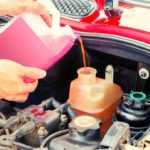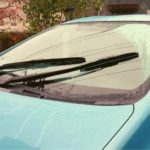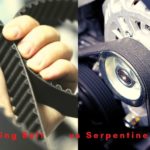
Driving at night is dangerous enough. It’s particularly riskier if you frequently go through regions where there’s a lot of deer activity. It’s a good idea to look into various options for protecting your vehicle from deer and other creatures that may cross the road directly in front of you. Many people question, “do brush guards protect your vehicle from deer?“.
The short answer is yes. One of the most common ways to safeguard your automobile against a deer collision is to use a brush guard.
Table of Contents
Do Brush Guards Protect Your Vehicle from Deer?
A brush guard can assist protect a vehicle against harm caused by colliding with a deer or other animal in several ways.
Deflection of Animals
Brush guards primarily protect vehicles from animal crashes by diverting the animal down and away from the car. This stops the animal from being thrown over the hood and onto the windshield, which frequently happens in sedans, trucks, and SUVs.
Deer and other animals can damage a car by rolling over the hood and smashing the windshield, but they can also severely hurt the driver and passengers, causing them to lose control. While a brush guard cannot guarantee that this will not happen, it helps reduce the chance.
Impact Force Transmission
Brush guards also protect the vehicle’s frame rather than body panels or the softer grill by shifting crash energy to the frame. The brush guard will take much of the impact force, but because it is attached to the vehicle’s frame structure, it works as an extension of the frame, absorbing the impact throughout the entire frame.
While this helps protect the front body panels, headlamps, and interior parts under the hood from harm, it also has some drawbacks.
For one reason, routing impact force straight to the frame bypasses the vehicle’s built-in shock absorption devices, thus increasing the likelihood of passenger injury.
Similarly, directing most of the crashes towards the frame may result in frame damage, leaving the automobile wrecked or requiring more expensive repairs. However, because car frames are relatively robust, this isn’t a significant problem unless the vehicle collides with a larger animal (a fully grown buck, for example), especially at high speeds.
In some circumstances, a brush guard can operate as a harm multiplier, dispersing the impact energy across a broader region. For example, if a deer is struck by the vehicle’s passenger side headlight hard enough, the entire brush guard may bend back and ruin the front end.
This may still be preferable to the alternative in some situations, as it may entail exchanging more severe localized injury for more broad – but modest – bodily harm. Brush guards constructed of lighter, more malleable materials are likewise more prone to this.
Conclusion
Although they are not always effective, brush guards can provide varying degrees of deer collision damage mitigation. A high-speed collision with a deer almost invariably results in serious injury, especially if the deer is giant.
In general, remaining vigilant, using high lights, observing traffic laws, and driving carefully are the best ways to avoid an animal collision. A brush guard may be worthwhile if you regularly travel on roads where a deer collision is likely.
Hi there! I’m Naomi O’Colman. I’ve got years of experience working at an auto repair shop here in Texas under my belt. On top of that, ever since I was a kid I’ve been passionate about the auto industry. Since I’ve joined the team at automotivegearz.com I’ve been enthusiastically sharing my passion and insights with my readers. I’m dedicated to delivering high quality content and helping you stay up to date with the latest automotive trends and products out there!







